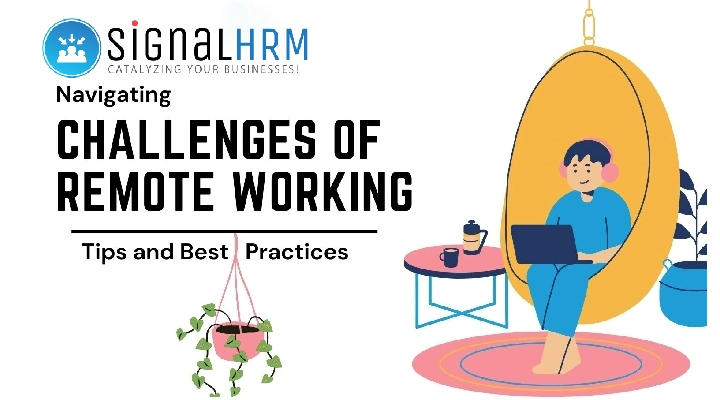
The Covid-19 pandemic has accelerated the adoption of remote work. This is a trend that will fade with time since the freedom to work from anywhere is the future of work. Therefore, organizations are trying to leverage technology and resources to embrace a remote work culture. This necessitates the need to offer flexible work arrangements to ensure a productive remote workforce for your organization. Read this blog to learn a few tips to overcome the challenges that you may face in managing your remote workforce.
Managing remote employees includes having open communication, engaging employees, tracking their productivity, and removing bottlenecks that hamper productivity. Some of the main challenges faced by organizations to manage employees virtually are:
- Isolation from the team brings loneliness and lowers the morale of the employee, impacting their efficiency.
- Lack of two-way communication results in a lack of streamlined flow of important messages.
- Bad internet results in problems in downloading files, attending meetings, and ensuring collaboration with the team members.
- Few employees fail to maintain a work-life balance leading to high stress, burnout risk, and poor health.
- Sustaining the company culture takes a huge effort, especially in a remote work setup.
Ways to overcome the challenges of remote work?
Offer access to tools
Organizations must provide access to important communication and collaboration tools, software, and hardware to their employees. Organizations that have a Bring Your Own Device policy must ensure that the business applications don’t retrieve personally identifiable information from the employee’s laptop.
Training and support
Use digital adoption platforms (that allow users to learn, use, and adopt an application) to train the employees to use the software applications. Product tours, walkthroughs, and self-help menus promote easy and effective learning.
Transparent communication
Convey all the essential information through emails, newsletters, and virtual meetings to ensure all the virtual employees are aware of the important events and milestones of the company.
Create a positive setup
Strive to create a positive environment that stimulates productivity and growth. Conduct skill development programs or group activities to create a culture of participation and inclusiveness.
Create a remote work policy
Organizations must create a remote workplace policy that explains clear expectations regarding their work. The policy must clearly define the eligibility criteria, methods for evaluating productivity, and expectations regarding the availability of employees during the workday.
Prioritize effective communication
It is imperative to establish transparent communication channels to develop trust among team members. Conduct weekly or bi-monthly team meetings to ensure everyone is aligned with the goals and objectives. Encourage employees to use video calls to enhance visual and verbal communication, fostering stronger connections.
Use productivity tools
Organizations must use tools to facilitate seamless communication and collaboration to allow employees to collaborate on projects in a fully digital workplace.
Provide flexibility in work hours
Managers should always encourage their employees to work at their optimal pace and increase productivity, as compared to a rigid 9 to 5 structure. Also, it is essential to note that this approach must be implemented with a sense of balance. Therefore, organizations must endorse flexible work hours while ensuring there are overlapping hours within their team, promoting collaboration and productivity.
Organizations can also use tools to streamline virtual workforce management. SignalHRM is one such HRMS software that helps you streamline workflows and simplify HR operations. Packed with different modules such as time and attendance, leaves, expense, recruitment, and payroll, it helps you manage a remote workforce successfully./p>
Visit: https://signalhrm.com/